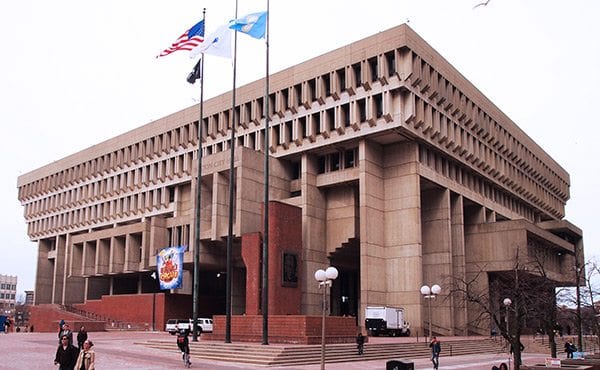
For people of color, the school department is a mirror image of the rest of the city. While whites make up the majority of the employees in the schools with 57 percent, people of color make up the majority at the highest level of pay, with 53 percent of those jobs.
But outside of the school department, the highest-paying jobs are monopolized by whites, who occupy 220 — 88 percent — of the 250 top-paying jobs in city government. Those numbers, compiled by City Councilor Charles Yancey, do not include overtime or salaries at quasi-public agencies like the Boston Redevelopment Authority, the Boston Housing Authority or the Boston Water and Sewer Commission. Of the 12 percent of the top-paying jobs held by people of color, 7 percent are held by African Americans, 4 percent by Latinos and 2 percent by Asians.
“The numbers are very disturbing,” says Yancey, who is in the midst of a series of council meetings on hiring and promotions in the city. “In the vast majority of city departments people of color are dramatically underrepresented in the top-paid positions. It represents a challenge for the new administration as well as for the City Council.”
The figures Yancey has culled are as of Dec. 31, 2013, and do not reflect any of the promotions and new hires that have taken place during the administration of newly-elected Mayor Martin Walsh.
On the campaign trail, Walsh pledged that his administration would reflect the city’s diversity at every level. While the numbers culled by Yancey suggest that many city departments have a long way to go, Walsh said he would honor his promise.
“We’re going to stick to what I promised to do as a candidate — to make sure the city government reflected the population of the city of Boston at every level,” he said.
Walsh said he has ordered a performance audit of the city’s Human Resources department, examining how city employees are hired. But changes to the city’s workforce are likely to take a few years. Because most city employees are protected by civil service laws and union contracts, the Walsh administration has little leeway to replace existing employees.
“You can’t just move people out,” Walsh said. “Over time, the numbers will change. I’m very focused on that.”
Yancey said the concentration of people of color in the schools may have been an outcome of the department running under a consent decree from the school desegregation lawsuit filed in the ‘70s. But more likely, he noted, leadership may be a factor.
“I think a lot has to do with who the superintendent is in the department,” he commented. “I’m not saying the superintendent has to be black to have a high percentage of people of color, but I don’t think it hurts.”
At the Boston Center for Youth and Families, headed by Christopher Bynner who is black, 42 percent of the pay goes to African Americans, 41 percent to whites, 14 percent to Latinos and 3 percent to Asians.
But in the majority of city departments headed by whites, people of color occupy few of the high-paying positions.
In the Treasury Department, 70 percent of the pay goes to whites. At the Fire Department there are just two African Americans in the top 58 positions, which include district fire chiefs, superintendents and assistant superintendents.
In the Parks Department, 70 percent of the pay goes to whites. In the Law Department, whites earn 80 percent of the pay. In Inspectional Services, whites earn 68 percent of the pay. In the Transportation Department, it’s 69 percent.
Of the 18,771 city employees, 10,223 — or 54 percent — are white, 28 percent are African American, 12 percent are Latino and four percent are Asian.
For decades, city government in Boston was dominated by whites. Blacks and Latinos were historically excluded from jobs in the schools, police and fire departments. In the 1970s, civil rights activists began documenting and challenging hiring practices in city government leading to a series of civil rights cases.
Consequently, several major city departments operated under court order at some point in the last 40 years. The Police Department, the Fire Department, the Boston Housing Authority and the School Department all operated under consent decrees governing hiring and promotion of black and Latino employees.
But while the numbers of black employees in those and other city departments increased during the ‘70s, ’80s and ‘90s, whites remained in control of the management of the departments and the public employee unions that mediated disputes over hiring and promotions.
There were notable gains under the administration of former Mayor Raymond Flynn, with blacks and Latinos appointed to head major city departments. But those gains in leadership positions eroded somewhat during the 20 years of the Menino administration.
In addition to lack of color in the city’s top jobs, Boston residents may also be missing out on the city’s largesse, according to Yancey. In spite of a Boston Jobs Residency ordinance, that mandates that most city workers live in the city of Boston, $426 million of the city’s $1.1 billion payroll goes to people living outside of the city.
“That’s an extraordinary amount of money,” Yancey said. “I’m sure there are a lot of Bostonians who can do these jobs. The infusion of $426 million could promote a lot of economic development in Boston.”







